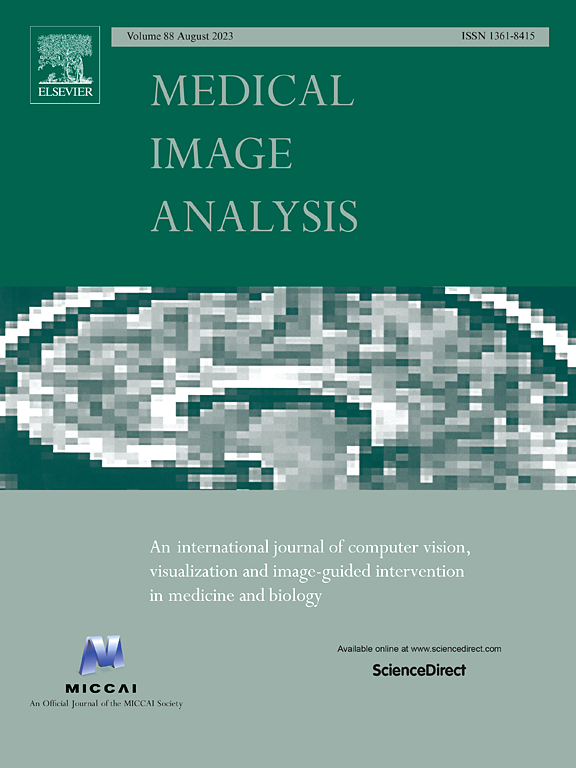Geometric deep learning with adaptive full-band spatial diffusion for accurate, efficient, and robust cortical parcellation
IF 10.7
1区 医学
Q1 COMPUTER SCIENCE, ARTIFICIAL INTELLIGENCE
引用次数: 0
Abstract
Cortical parcellation delineates the cerebral cortex into distinct regions according to their distinctiveness in anatomy and/or function, which is a fundamental preprocess in brain cortex analysis and can influence the accuracy and specificity of subsequent neuroscientific research and clinical diagnosis. Conventional methods for cortical parcellation involve spherical mapping and multiple morphological feature computation, which are time-consuming and prone to error due to the spherical mapping process. Recent geometric learning approaches have attempted to automate this process by replacing the registration-based parcellation with deep learning-based methods. However, they have not fully addressed spherical mapping and cortical features quantification, making them sensitive to variations in mesh structures. In this work, to directly parcellate original surfaces in individual space with minimal preprocessing, we present a full-band spectral-accelerated spatial diffusion strategy for stable information propagation on highly folded cortical surfaces, contributing to adaptive learning of fine-grained geometric representations and the construction of a compact deep network (termed Cortex-Diffusion) for fully automatic parcellation. Using only raw 3D vertex coordinates and having merely 0.49 MB of learnable parameters, it demonstrates state-of-the-art parcellation accuracy, efficiency, and superior robustness to mesh resolutions and discretization patterns in both the cases of infant and adult brain imaging datasets.
几何深度学习与自适应全波段空间扩散准确,高效,鲁棒皮质包裹
皮层分割将大脑皮层根据其解剖学和/或功能的独特性划分为不同的区域,是大脑皮层分析的基本预处理过程,可以影响后续神经科学研究和临床诊断的准确性和特异性。传统的皮质分割方法包括球面映射和多种形态特征计算,由于球面映射过程的原因,这些方法耗时且容易产生误差。最近的几何学习方法试图通过用基于深度学习的方法取代基于配准的分割来自动化这一过程。然而,他们还没有完全解决球面映射和皮质特征量化,使他们对网格结构的变化敏感。在这项工作中,为了在单个空间中以最小的预处理直接分割原始表面,我们提出了一种全波段光谱加速空间扩散策略,用于在高度折叠的皮质表面上稳定的信息传播,有助于细粒度几何表示的自适应学习,并构建一个紧凑的深度网络(称为皮质扩散),用于全自动分割。仅使用原始的3D顶点坐标,只有0.49 MB的可学习参数,它在婴儿和成人脑成像数据集的情况下展示了最先进的包裹精度,效率和卓越的网格分辨率和离散模式鲁棒性。
本文章由计算机程序翻译,如有差异,请以英文原文为准。
求助全文
约1分钟内获得全文
求助全文
来源期刊

Medical image analysis
工程技术-工程:生物医学
CiteScore
22.10
自引率
6.40%
发文量
309
审稿时长
6.6 months
期刊介绍:
Medical Image Analysis serves as a platform for sharing new research findings in the realm of medical and biological image analysis, with a focus on applications of computer vision, virtual reality, and robotics to biomedical imaging challenges. The journal prioritizes the publication of high-quality, original papers contributing to the fundamental science of processing, analyzing, and utilizing medical and biological images. It welcomes approaches utilizing biomedical image datasets across all spatial scales, from molecular/cellular imaging to tissue/organ imaging.
 求助内容:
求助内容: 应助结果提醒方式:
应助结果提醒方式:


